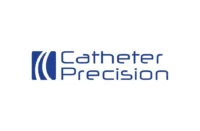The permanent heart implant is the only FDA-approved device for the reduction of stroke risk in patients with non-valvular atrial fibrillation
LAGUNA HILLS, CA – Oct. 28, 2021 — The MemorialCare Heart & Vascular Institute at Saddleback Medical Center recently performed its 100th WATCHMAN™ Left Atrial Appendage Closure Device procedure, marking a major milestone for patients with atrial fibrillation (AFib) in South Orange County. These patients are often at high risk of suffering a stroke and need to take lifelong anticoagulation medication (i.e., blood thinners) to reduce their risk. These medications can sometimes cause spontaneous bleeding. The WATCHMAN device can be an alternative to the lifelong use of blood thinners for people with AFib not caused by a heart valve problem (also known as non-valvular AFib).
“The greatest thing about the Watchman Device is it gives our patients stroke protection for life, without a life-long obligation to blood thinner medication,” says Ashish Shah, D.O., electrophysiologist, MemorialCare Heart & Vascular Institute, Saddleback Medical Center. “Patients who are permanently on blood thinners, have a greater risk of bleeding issues from falls and can have extreme bruising. It also greatly reduces the monthly costs of prescription medication for any patient, but that is especially important for health equity in our older adult population.”
An estimated five million Americans are affected by AFib – an irregular heartbeat that feels like a quivering heart.1 People with AFib have a five times greater risk of stroke2 than those with normal heart rhythms. The WATCHMAN device closes off an area of the heart called the left atrial appendage to keep harmful blood clots that can form in the left atrial appendage from entering the blood stream and potentially causing a stroke. By closing off the left atrial appendage, the risk of stroke is reduced, and, over time, patients can usually stop taking blood thinners.
Dr. Shah, who is fellowship-trained in the Watchman procedure, along with his colleague, John Bahadorani, M.D., also trained in Watchman, just successfully implanted the 100th Watchman device in Mary Manthorne, a 82-year-old Laguna Woods Village resident. Manthorne elected to do the Watchman device procedure after hearing that it can protect her from stroke, help slowly get her off medication and would improve her bruising. The same physician duo also performed the very first Watchman device implant at Saddleback Medical Center when the program initially rolled out.
“The doctors were very clear with me about all my options,” says Manthorne. “I decided to go for it [device surgery] after finding out the benefits outweighed the risks. I also have never been on medication for my whole life. Once I was diagnosed with AFib, I knew I was going to need to be on some sort of heart medication, but I didn’t want to also be on blood thinners for the rest of my life – especially with the amount of bruising it caused.”
The WATCHMAN device is implanted through a minimally invasive one-time procedure. It’s a permanent device that doesn’t have to be replaced and can’t be seen outside the body. The procedure is done under general anesthesia and takes about an hour. Patients commonly stay in the hospital overnight and leave the next day. “The WATCHMAN procedure is a short procedure under general anesthesia, with no incisions” says John Bahadorani, M.D., interventional cardiologist, MemorialCare Heart & Vascular Institute, Saddleback Medical Center. “We are able to go in through the groin and most patients go home the very next day. This is an important investment Saddleback Medical Center has made in the community we serve.”
About MemorialCare Saddleback Medical Center
Saddleback Medical Center received U.S. News & World Report high performance rankings for Heart Attack, Congestive Heart Failure, Stroke, Diabetes, Aortic Aneurysm Repair, Knee Replacement, COPD, Kidney Failure and Pneumonia. It was named among America’s 50 Best Hospitals, Top 50 U.S. Cardiovascular Hospitals, Orange County Register Best Orange County Hospitals and Top Workplaces; received Magnet Nursing Excellence designation and American Heart Association/American Stroke Association Stroke Care Gold Plus and among first U.S. hospitals earning Thrombectomy-Capable Stroke Center Certification and Geriatric Emergency Department Accreditation. Centers of Excellence include cancer, heart, orthopedics, spine, neuroscience, gastroenterology, emergency and critical care, breast health, imaging, women’s health, obstetrics, geriatrics, and minimally invasive and robotic-assisted surgery. Visit www.memorialcare.org/saddleback.
###
1. Colilla et al., Am J Cardiol. 2013; 112:1142-1147
2. Holmes DR, Seminars in Neurology 2010; 30:528–536





